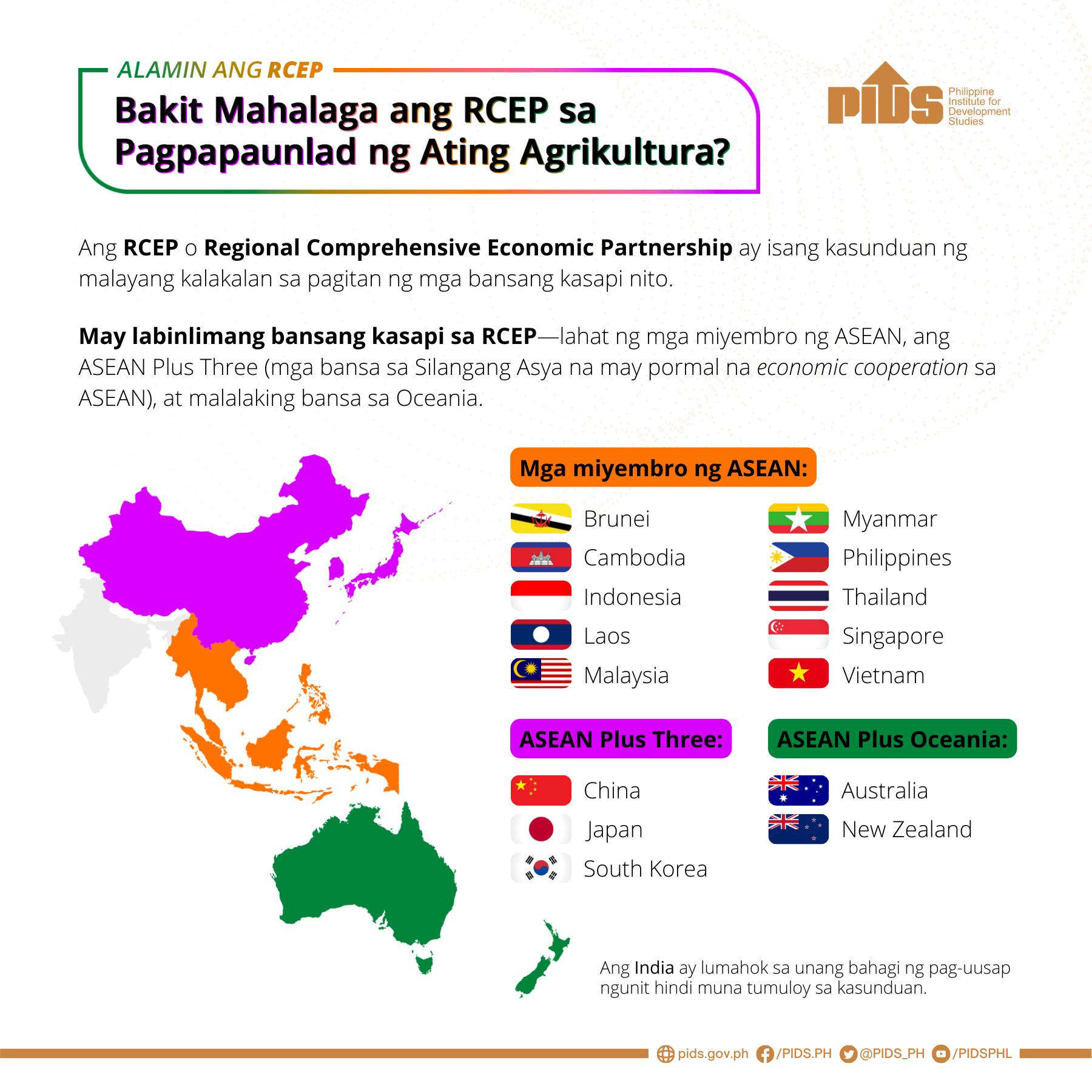The Philippines has missed the January 1, 2022 effectivity of the Regional Comprehensive Economic Partnership (RCEP) as Senate went into recess without concurring the ratification of the mega trade deal.The Senate concurrence also faced stiff opposition by several groups, mostly agriculture and non-governmental organizations, strongly urging senators to reject the trade deal. The groups think the deal will result in further “import surges, price depressions, and displacement of local production.”
The RCEP Agreement will enter into force on Jan. 1 2022 for six ASEAN member states — Brunei Darussalam, Cambodia, Lao PDR, Singapore, Thailand, and Vietnam, and the five ASEAN trading partners namely Australia, China, Japan, Korea, and New Zealand. Encompassing 15 nations and 2.2 billion people, the trade partnership offers broad economic and societal benefits that go beyond imports and exports. RCEP economies account for 29 percent of global gross domestic product. One study noted that real income increase for the world from the trade pact will amount to $186 billion by 2030.
DTI Assistant Secretary Allan B. Gepty, the Philippines’ lead negotiator for the RCEP Agreement, said that Senate will continue conducting public hearing next year. Once concurred, Gepty said “We can immediately deposit the Instrument of Ratification.”
The country’s participation under the actual RCEP trading environment will take effect 60 days from the deposit of Instrument of Ratification. Gepty said the delay in the Philippine participation in RCEP is just for a few months.
“We really have to be a part of RCEP. The advantages and opportunities are very clear, and if we delay participation, it will not just be costly for us but we will be missing a lot of opportunities,” stressed Gepty.
During the conduct of public hearings by the Senate Committee on Foreign Relations (CRF), questions were raised by stakeholders on the impact of the RCEP Agreement to the Philippine economy, particularly in the context of economic slowdown due to the pandemic, and the worsening trade balance of the Philippines. Stakeholders also had concerns that the tariff liberalization that come with the RCEP Agreement would cripple the country’s ability to address the COVID-19 pandemic due to lower tariff revenues, and force local industries out of business with cheaper imported goods.
The primary basis for these concerns is the study by Banga et al., published by the Boston University which shows that tariff liberalization under RCEP will negatively impact the balance of trade (BOT) of ASEAN countries. The balance of trade (BOT) of the region will deteriorate by 6 percent annually primarily due to increase in imports and trade diversion within the RCEP group towards more efficient exporters. For the Philippines, the study finds that exports are estimated to decrease by 0.2 percent while imports will increase by 0.2 percent, causing a decrease in the country’s trade balance by 1.1 percent.
In contrast, many economists and international organizations have defended the value and importance of the RCEP to the Philippines and to the region.
Dr. Francis Quimba, of the Philippine Institute for Development Studies (PIDS), non-participation to RCEP will cause the Philippines to miss out on this opportunity to facilitate the much-needed economic growth and recovery. He stressed that delayed or non-participation to RCEP would lead to a 0.26 percent decline in real GDP of the Philippines.
“Economies that fail to ratify the agreement (when the rest of the countries do) will be adversely affected. The Philippines and Vietnam are among the countries that have positive export growths once the RCEP is in effect, and much of the growth is coming from new-product margin where innovations stem,” said Dr. Quimba.
Initial estimates by Quimba showed that while East Asian countries stand to benefit the most in terms of increase in exports as RCEP will be the first FTA among the three, the Philippines and Vietnam will gain the most in terms of real GDP due to lower trade costs and higher factory gate prices.
On the same vein, a study conducted by Dr. Caesar Cororaton, a Research Fellow at the Virginia Polytechnic Institute and State University (USA) and a Visiting Scholar at the De La Salle University (DLSU), noted that the RCEP is estimated to improve the country’s trade balance by as much as $128.2 million, increase overall welfare by $ 541.2 Million, contribute to a 1.93 percent real GDP growth, and lower poverty incidence by 3.62 percent in 2031.
In the study released by the Asian Development Bank (ADB, it recognized that RCEP has a strong potential to mold regional trade and investment patterns well into the future and to influence the direction of global economic cooperation at a challenging time. RCEP effects on the region’s trade will also significantly deepen regional production networks and raise productivity. At the sectoral level, exports and imports of nondurable and durable manufactures will experience the most growth.
Some stakeholders, however, pointed out that the study by the ADB indicate marginal gains for the Philippines, with the country only seeing an incremental increase in real income of $ 3 billion by 2030 (or 0.39% growth) compared to other RPCs such as China, Japan, and Korea.
But DTI Secretary Ramon M. Lopez explained that it is understandable that east Asian countries see the largest increase in incomes as this will be the first time that these three countries will have an FTA among each other.
“Prior to RCEP, there had been no FTA between China, Japan, and Korea which means there is no pre-existing preferential treatment on traded goods among them, and MFN rates are applied. The same can also be said with trade in services and investment where these countries do not accord special treatment to services and investments coming from the other two countries,” said DTI Lopez.
It must be stressed, however, that increase in income or percentage of growth rate must always be viewed in proper context taking into account the size of the economy, levels of development, and extent of economic activities.
Lopez noted that while the ADB study stated that the Philippines will see a small incremental increase in real income valued at only $3 billion by 2030, this must be viewed in proper context.
Lopez pointed out that Singapore has zero incremental income in the study with a growth rate of 0.05 percent; Brunei has 0.46 percent change in income but it has zero incremental income; Indonesia has 0.18 percent change in income yet it has $4 billion incremental income; and Vietnam has 0.97 percent change in income yet it has only $ 4 billion incremental income.
The trade chief further cited a study by UNCTAD also recognized that the “large potential of the RCEP agreement in creating trade for the member economies also implies that even for members that may initially negatively affected by trade diversion effects, it is better to be in than out the RCEP agreement. Not only because being part of the deal creates additional trade that may offset the loses, but because it strengthens economic integration and the benefits that may come with it, such as foreign direct investment, technology sharing, structural transformations, among others.”
For his part, Gepty also explained that while the assumptions and estimates on the benefits of RCEP to the Philippines vary, studies consistently show that the Philippines will indeed benefit from the RCEP Agreement. “Figures may be higher or lower depending on the assumptions and models used, but an improvement in real GDP, no matter how small, is always a welcome development, especially as we seek to reverse the economic slump we’ve experienced due to the pandemic,” concluded Gepty.








